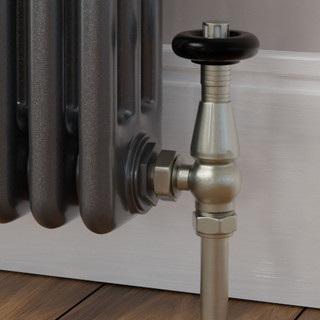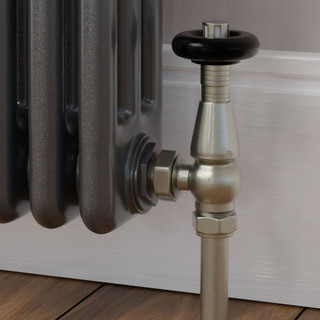What style of radiator would suit my home?
Posted by RB on 11th Apr 2022
What style of radiator would suit the period of my home?
The choice of radiator for your home is rarely easy. They will be part of your home for many years to come and can be either a big and bold feature, blend into their environment or somewhere in between. It can be a tricky decision, but there’s no right or wrong, it’s wholly subjective. The below will give you some suggestions of what we believe are the best radiator choices for the period your home was built in.
1) TUDOR 1485 – 1603.

The Tudor Period is bookended by Henry VII (1485) and the demise of Elizabeth I (1603).
The increased viability of transport enables wealth to flow into the country which resulted in a new opulence amongst the landed classes. Painted panels above dark oak panelling, richly coloured velvet, exposed and decorative roof beams and intricate yet bold wood-carved decoration was abound.
The types of radiator that suit this period of home are ones that have simple, yet solid aesthetics. Radiators such as the Harcourt or Stanton will complement rooms with high levels of detailing whilst the Cromwell Regal would add a touch of refinement to more simple Tudor rooms. Another style that crosses both styles is the Trinity which lends a Gothic tone to a room.
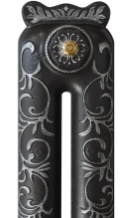
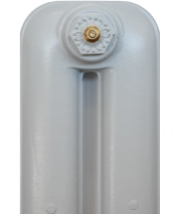
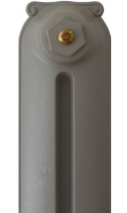

2) STUART 1603 -1714.

From timber to brick. For over a century the Stuart period was influenced by religion and politics, both in society and in design.
With the Great Fire came major rebuilding of homes in London and with it and new influence on architecture in brick and interior design. European architecture influenced the style with elaborate fireplaces, more spacious rooms and the use of colour becoming more prolific.
Radiators to suit this period reflect the architecture, mullioned windows, flat-fronted buildings with a solid, fit for purpose appearance. Not no-frills, but not far from it. The fuss-free Rook or Shelbourne hit the mark.
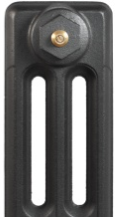


3) GEORGIAN 1714 – 1830.

I, II, III and IV King Georges sat on the throne between 1714 and 1830. During this period the style evolved to champion elegance with symmetry, highly ornate features and mouldings, and delicate colours like faint yellows, light greys, lilac and light blue. Buildings were becoming far more regulated and the Great Fire from half a century before was influencing rules and regulations to improve standards.
The styles of radiator to suit this period of home follow the design principles of the architects of the time like John Carr, Henry Holland and Robert Adam. Corinthian, Ionic and Doric columns fronted the most luxurious of houses, whilst even the fourth class homes were built in ratios and styling to match.
Radiators for GEORGIAN style homes should have either 2, 4 or 6 Columns and be an equal (not odd) number of sections wide. Symmetry was the goal. Styles that suit this era are the Neo-Georgian 2, 4 or 6 Column, Rosedale and Boleyn.
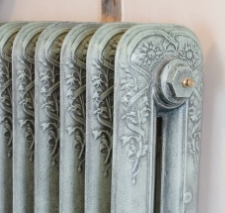
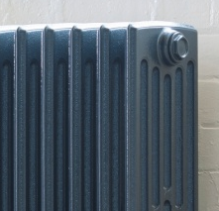
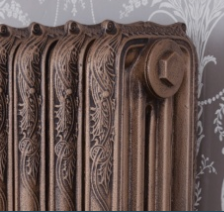
4) VICTORIAN 1839 – 1900.

The Victorian era is renowned for invention. The Industrial Revolution happened, the Empire grew to include a quarter of the Worlds population and influences from abroad flowed in as fast as the money.
Pugin and Ruskin spearheaded the Gothic Revival and homes became influenced by the steep-pitched gables, pointed arches, elaborate cornices and leaded glass used in church and cathedral buildings.
When thinking about Victorian design, the absolute opposite of minimalism is true. Swathes, swags, tails and finials in their plenty. Swirls, crests and plentiful amounts of Morris inspired organic patterns were in vogue. It was also the period that started to see what we consider to be domestic radiators being used in homes. The Shelbourne is an ‘of the era’ radiator, and is perfect in Victorian period homes. The Rococo and Chelsea bring the sumptuous and intricate design detail into focus.
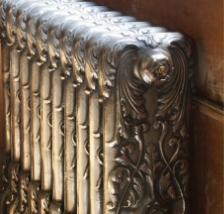
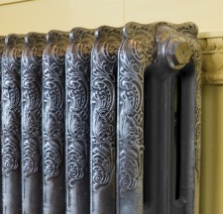
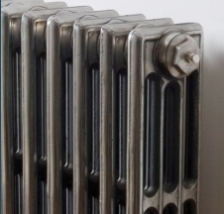
5) QUEEN ANNE REVIVAL 1875 – 1905.

At only 30 years, the Queen Anne Revival period was relatively short but very influential. Architectural pen-and-ink drawings from Norman Shaw were reprinted in magazines and journals and were rapidly adopted on the other side of the Atlantic, still there for visitors to the USA to see.
Asymmetrical and irregular, the style is typified by the use of Dutch-influenced scalloping. Ornate brickwork detail, evident quoins and oriel windows are also heavily featured. Cherubs, ribbons, gas lights, tassels all lead to the Baroque style that these three decades enjoyed and exploited.
Radiators to suit the style of the time are pieces of art in their own right, the Sunflower, the Alexandra and the Cherub will add this style to any property.
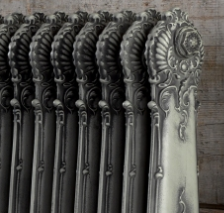
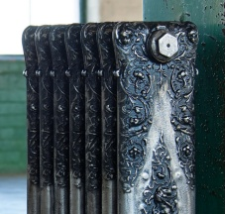

6) EDWARDIAN 1900 – 1914.

The Edwardian period saw the flourishing suburbs come to life and with it, new housing stock that begged, borrowed and stole from the preceding eras. With more space to build, the houses could be larger, more width and less height. Features that typify Edwardian Houses are the use of red brick, tiled or slate roofs, large bay windows and plenty of light inside.
Electric lighting was now commonplace which in turn lead to cleaner homes with dirt being more visible. Features like ceiling roses, high skirting boards, tiled and detailed fireplaces are commonplace as are dedicated bathrooms. Six over two panel sash windows also feature heavily which allow the beautiful muted colour pallets to shine.
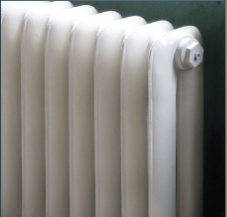

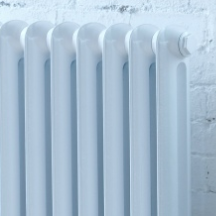
7) THE GREAT BRITISH SEMI 1916 - 1950.

The Semi, or Semi-Detached Houses as they are properly known, are by far the most common type of house in the UK. Loosely placed in the interwar period, the growing middle classes were able to afford to buy homes for themselves, and where they couldn’t, adequate housing stock was built for social housing.
The rapid change over this period makes a ‘style’ difficult to pinpoint, but the scale and dimensions of these types of houses allow for full-sized radiators to be used throughout the property. Two Cast Iron and two Column radiators that are perfect in good sized rooms, but also available in slimmer versions to fit in hallways, WCs and bathrooms are The Liberty, The Eton, The Classic White and The Infinity Raw.

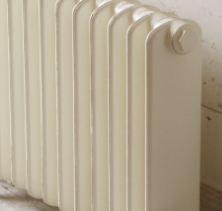
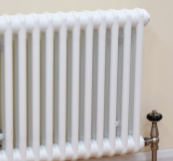
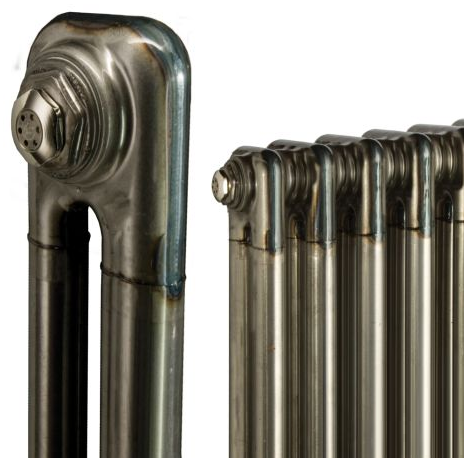
8) ART DECO 1910 – 1940.

The Art-Deco style was the first to be fashionable around Europe and further at the same time.
Homes built in this style have characteristic curved and straight profiles in symmetrical and asymmetrical arrangements. Technological advances meant the use of new materials enabled design features such as curved glass windows, stucco, aluminium and stainless steel to fall within the reach of architects and developers.
Internally, angular and geometric forms, that were fuss-free and functional were the themes that were most popular and with that, the furniture and adornments followed suit. The use of colour was bold and often striking with vivid blues, reds, greens chrome and yellows featuring heavily. This is where the deep and rich RAL colours of the Classic range can really come to life.
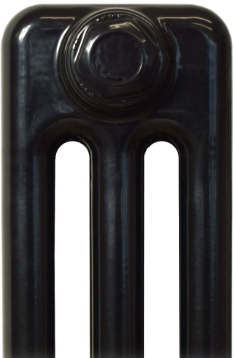
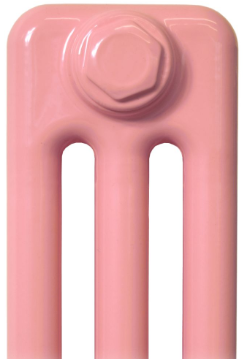

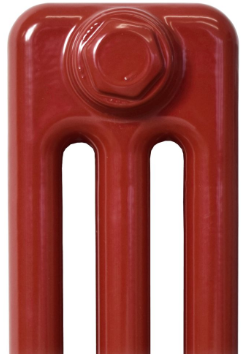
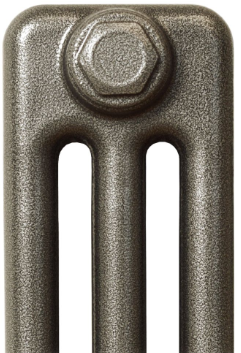
9) NEW WAVE BUILDS 1990 – 2010.

Developments built between 1980 and into the turn of the century were typified by densely built homes that gave a spacious feel.
All but a tiny few were planned, designed and built with central heating as an integral part of the structure, but embellishment and enrichment of the external features was lacking.
Function over form prevailed and this included heating with a proliferation of cheap, steel, panel radiators. When redesigning spaces in these types of homes, space saving doesn’t have to come at the cost of great design and using a radiator as a feature is a great way to combine form and function. In these environments, we would suggest the Infinity Raw as an impressive feature, TE White 2 column 1800 high to minimize footprint but maximise output and the Decoral Slim as a way to add sleek lines with great design and fantastic heat output,

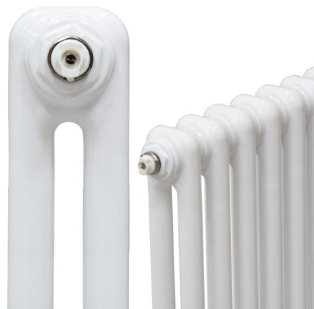
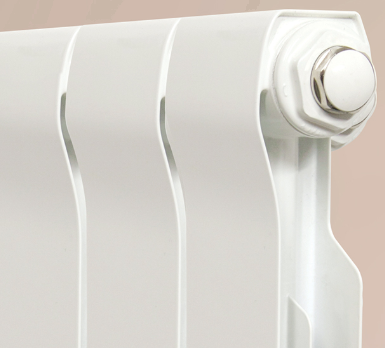
10) ARCHITECTURAL MINIMALISM 2010 – DATE

Houses being designed and built currently are unbounded by convention and the building materials available seem limitless. The designs are efficient, clean, light, airy and functional. Whether it’s a development in the heart of a crowded city or a bespoke self-build in the countryside, the regulations are pushing developers towards clean living and environmentally sound choices.
The external aesthetic is often mirrored with the internal décor, keeping clean and simple lines, minimalistic appearance but always with highly efficient outcomes.
Very much in line with these sentiments and retaining a sharp appearance are radiators cast from aluminium. These radiators are completely recyclable and more often than not made from recycled aluminium. They are highly efficient, heating up more quickly and using less water than their traditional counterparts. In these surroundings, we would suggest the 1.8m high Eliptico to make a real impact. To add flow to a room, the Malpensa Wave will break up, and make interesting, large areas of wall and the TE Gun Metal Grey radiator at only 42cm wide by 40.7cm high is fantastic in small spaces.
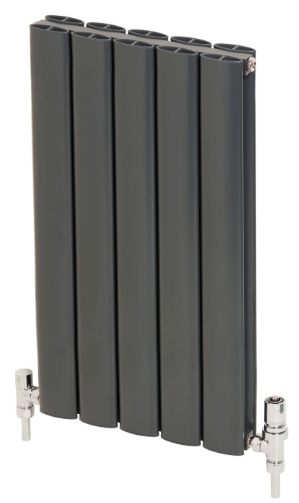
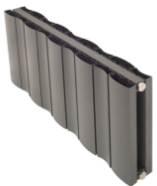

SUMMARY
Whatever era your home is from, there will be a range, size, colour and material to suit your home.
Tall, short, squat, wavy, curved, wide and long, the options are near limitless. Radiators are now part of the interior designers accessory box, adding beauty and style to rooms of all types and in rooms from houses built throughout the decades.
We hope the above gives you some insights and inspiration for choosing radiators for your home. We are always on hand to discuss your requirements and take pleasure in helping you plan your dream outcome.
Customer Favourites:








